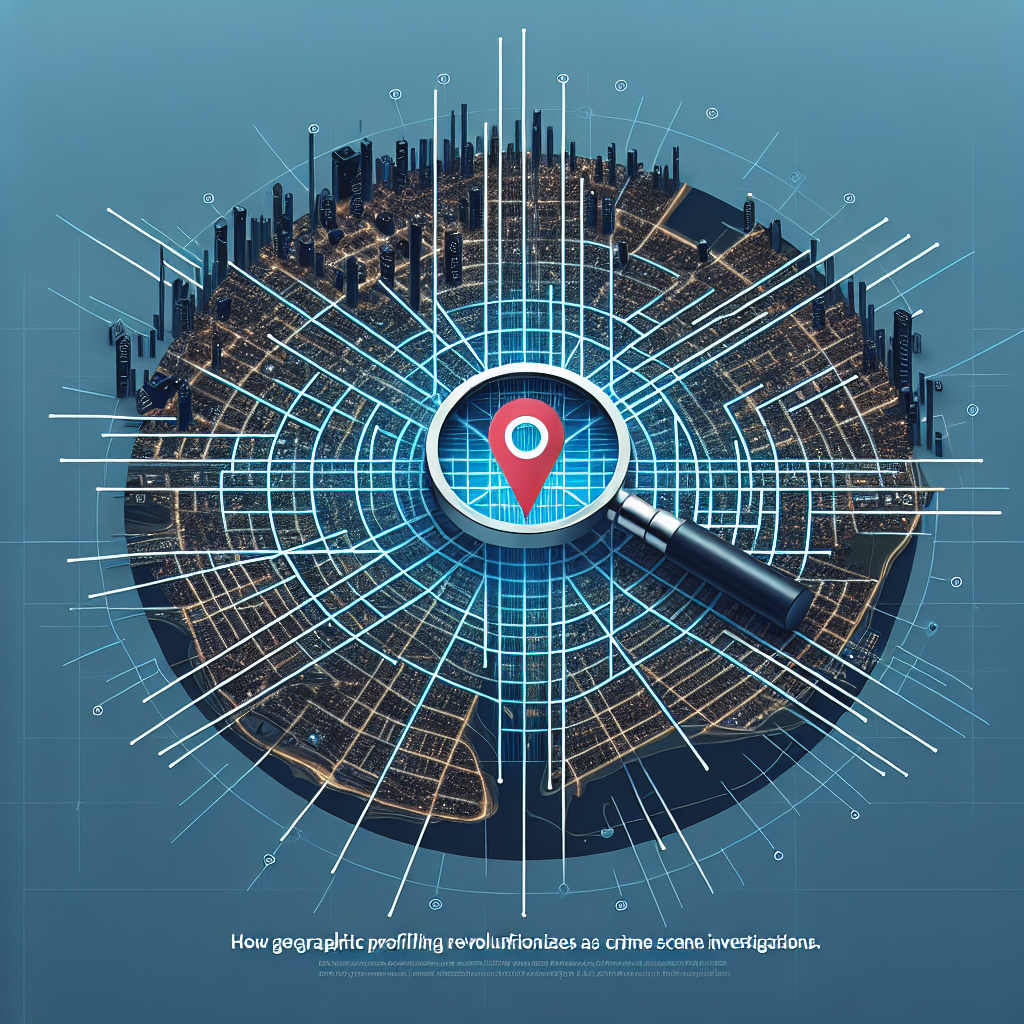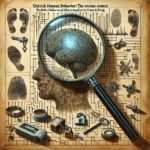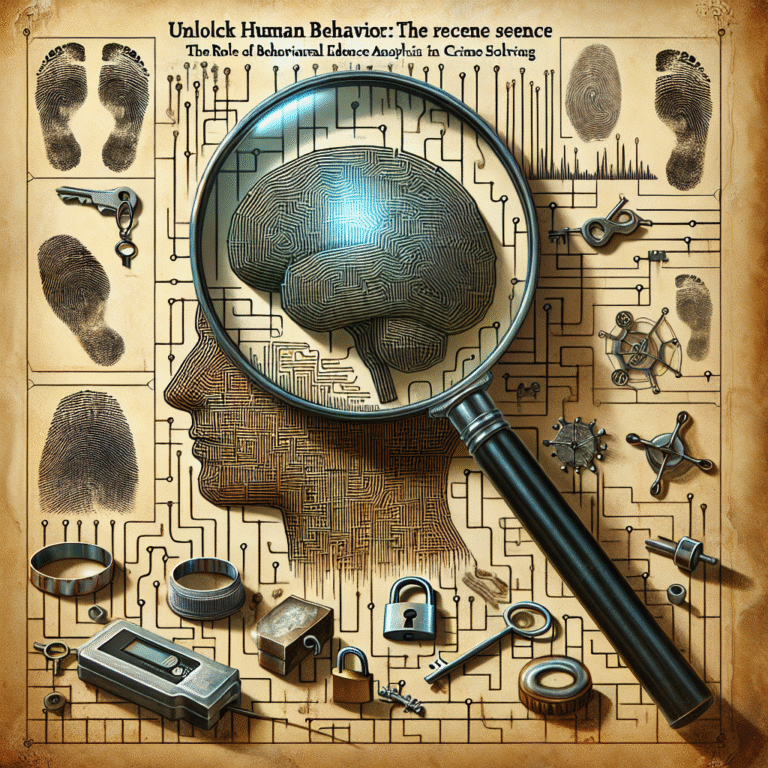
Introduction
In today’s complex world, crime scene investigations (CSIs) have evolved dramatically. With advances in technology and methodology, investigative practices now employ data-driven techniques that were once unimaginable. Among these, geographic profiling stands out as a revolutionary tool that optimizes the way law enforcement approaches crime-solving. This article will delve deep into how geographic profiling revolutionizes crime scene investigations, transforming data into actionable insights and enhancing the efficiency of solving cases.
Understanding Geographic Profiling
Geographic profiling is a technique used in criminal investigations that analyzes the spatial relationships between crime scenes. By mapping out locations where crimes occurred, investigators can identify patterns that might not be visible through traditional methods. This process helps in predicting the area where the offender might live or operate, significantly narrowing down the suspect pool.
The Science Behind It
At its core, geographic profiling combines principles of geography, statistics, and psychology. Investigators study the crime scenes and look for patterns related to the locations, victim choice, and the timing of the incidents. Through analyses of these elements, profilers can often reveal the probable home base of an offender.
Key Components
- Location Data: The geographic coordinates of each crime scene.
- Criminal Behavior Patterns: Understanding the offender’s modus operandi.
- Environmental Features: Assessment of the physical and social environments around crime scenes.
These components work together to create a comprehensive view that can significantly enhance investigation strategies.
The Evolution of Crime Scene Investigations
Historical Context
Traditionally, crime scene investigations relied heavily on eyewitness accounts and physical evidence, leading to lengthy investigations with often mediocre outcomes. The rise of geographic profiling marks a pivot point where analysis supplants guesswork, offering a more scientific approach to tracking criminals.
Case Study: The Green River Killer
One of the most notorious cases that exemplify the power of geographic profiling was that of Gary Ridgway, the Green River Killer. Over two decades, he murdered numerous women, leaving law enforcement baffled. It wasn’t until geospatial analysis pinpointed certain areas where the bodies were discovered that investigators could map out his activities, leading them to connect Ridgway to multiple murders and ultimately, his successful capture.
Analysis
This case demonstrates how geographic profiling revolutionizes crime scene investigations by providing spatial context that can lead to breakthroughs in seemingly unsolvable cases.
Technological Advancements
With the rise of Geographic Information Systems (GIS) and advanced statistical tools, geographic profiling has become more precise and user-friendly. Software platforms now allow law enforcement to visualize crime data in real-time, making it easier to communicate insights and strategize further investigation.
How Geographic Profiling Works
The Process
- Data Collection: Gathering all relevant crime scene data.
- Mapping: Using GIS to plot the crime scenes.
- Analysis: Utilizing statistical models to identify patterns.
- Profiling: Creating an offender’s geographic profile.
Visual Representation
To aid in understanding, here is a simplified table showing the stages of geographic profiling:
| Stage | Description |
|---|---|
| Data Collection | Compile data from crime scenes |
| Mapping | Plot the locations using GIS |
| Analysis | Identify patterns and clusters |
| Profiling | Formulate a geographic profile of the offender |
This structured approach showcases how geographic profiling revolutionizes crime scene investigations by transforming raw data into insights that can directly impact case resolution techniques.
Real-World Applications
The Toronto Serial Killer Case
In 2018, a series of gay men went missing in Toronto’s Church-Wellesley Village. Investigators employed geographic profiling to analyze the locations where these men were last seen. By mapping the data, they were able to pinpoint a cluster of activity that led them to Bruce McArthur, who was ultimately arrested and charged.
Analysis
This case illustrates how timely and accurate application of geographic profiling can expedite investigations, as it provides a framework for assessing where an offender might strike next, thereby facilitating effective intervention strategies.
Enhancing Community Safety
Geographic profiling does not only apply to active investigations but can also be employed proactively. By identifying hot spots for certain types of crimes, law enforcement can allocate resources more efficiently and implement community safety measures in high-risk areas.
Challenges and Limitations
Despite its effectiveness, geographic profiling is not infallible. A few challenges include:
- Data Quality: Inconsistent or inaccurate data can skew results.
- Complex Criminal Behavior: Not all offenders follow predictable patterns.
- Community Cooperation: Criminal profiling relies significantly on community engagement and support.
Future Directions
As law enforcement agencies become more tech-savvy, the integration of artificial intelligence and machine learning into geographic profiling will herald new advancements. Predictive policing tools could further enhance these capabilities, making investigations quicker and more reliable.
Conclusion
In summary, how geographic profiling revolutionizes crime scene investigations is not just a matter of technological advancement; it’s a shift toward a more informed, analytical approach to solving crimes. By embracing these techniques, law enforcement agencies can enhance their investigative strategies, making communities safer and leading to the swift apprehension of offenders. The advancements in geographic profiling signify a brighter, more efficient future for crime investigations, proving that data-driven methodologies can shape effective solutions.
FAQs
What is Geographic Profiling?
Geographic profiling is a method used by law enforcement to analyze geographical data related to crime scenes to predict the likely geographic area where an offender resides.
How effective is Geographic Profiling in solving cases?
Studies show that geographic profiling can significantly increase the likelihood of solving cases, particularly when used in conjunction with traditional investigative methods.
Can Geographic Profiling be used for all types of crimes?
While it is most effective for certain categories like serial offenses, geographic profiling can be applied to various crime types where location data is available.
What are the main tools used in Geographic Profiling?
The key tools include Geographic Information Systems (GIS), statistical software for pattern analysis, and mapping applications to visualize crime data.
Will geographic profiling eliminate the need for traditional investigation methods?
No, geographic profiling is not a replacement but rather a complement to traditional investigative methods, enhancing their effectiveness and precision.
By integrating these insights, this article sheds light on the significant role geographic profiling plays, ultimately revolutionizing crime scene investigations and improving community safety.















